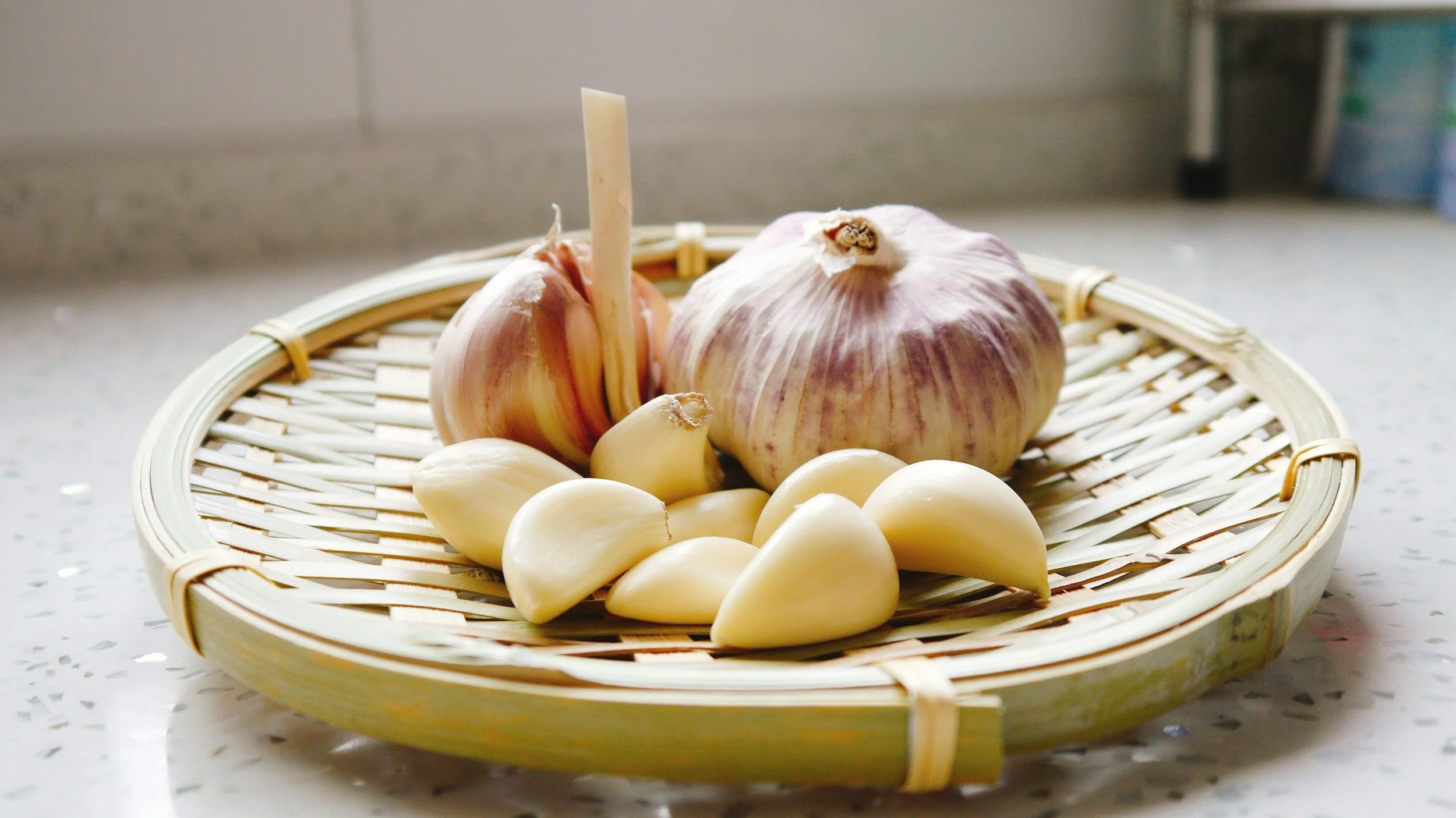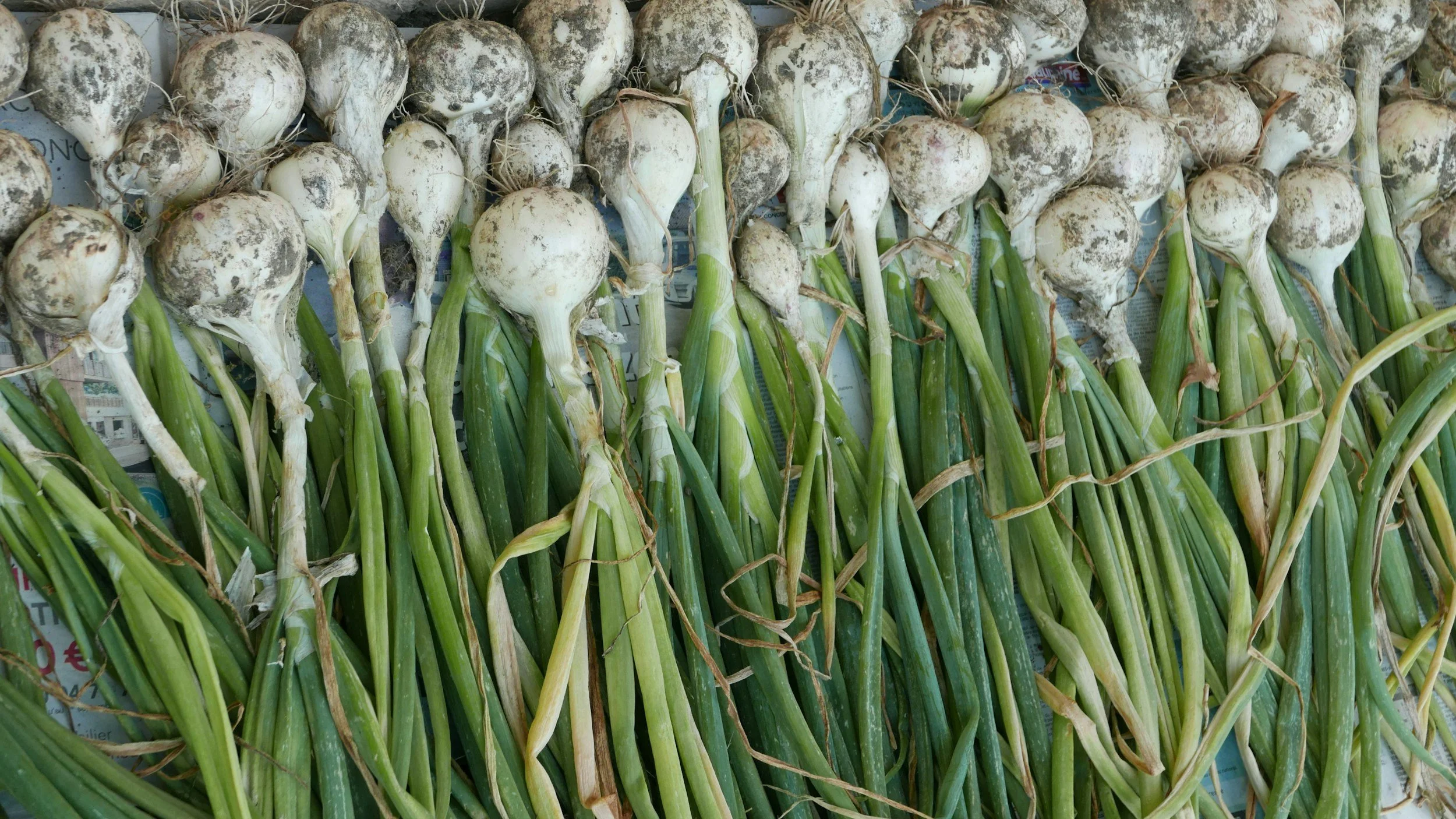
Ilocano garlic.

Livlihood and symbol.
Garlic, or bawang, is one of the most treasured crops of the Ilocos. Known for its small, white bulbs and sharp, lasting flavor, Ilocano garlic has long been celebrated as the finest in the Philippines. It is an essential ingredient in Ilocano cooking, shaping the taste of dishes like pinakbet, longganisa, and dinardaraan. More than just a seasoning, garlic reflects the resilience and pride of Ilocano farmers who continue to cultivate it despite the challenges of foreign competition.
Early roots
Garlic was introduced to the Philippines through early trade with China and other Asian neighbors well before Spanish colonization. The Ilocos region, with its dry climate and sandy soil, proved especially well-suited for garlic cultivation. Over time, Ilocanos became renowned for producing small, pungent bulbs known for their strong flavor and long storage life.
Spanish and colonial period
During Spanish rule, garlic was part of the broader agricultural system, though it never faced the strict control tobacco did. Instead, garlic was grown mainly by smallholder farmers for local use and trade in local markets. It became essential in Ilocano cooking, pairing with vinegar, salt, and local vegetables in dishes that defined regional cuisine.
The Ilocos garlic reputation
By the 19th and 20th centuries, Ilocos garlic developed a reputation as some of the best in the Philippines. Its unique qualities—smaller size, whiter skin, and sharper bite—made it highly valued, even though imported garlic from China often arrived cheaper and in larger bulbs. Despite competition, Ilocano garlic held a place of pride because it symbolized authenticity in local dishes like pinakbet, dinardaraan, and longganisa.
Challenges and resilience
In recent decades, local farmers have struggled against the influx of low-cost imported garlic, especially from China. This has caused fluctuations in the local garlic industry, with many Ilocano farmers shifting away from garlic production due to low profitability. Yet garlic remains a celebrated crop, and government initiatives and farmer cooperatives continue to promote “Ilocos Garlic” as a distinct, premium product.
Cultural and culinary legacy
For Ilocanos, garlic is more than just a crop—it is a defining ingredient of their cuisine and a source of regional pride. It reflects Ilocano values of frugality, boldness, and resilience. Even today, many families in the region plant garlic not just for sale but as a way of preserving tradition and taste.
Legacy
The history of garlic in Ilocos is one of endurance. From its early arrival through Asian trade, to its establishment as a household staple, to its battle against imported competition, garlic remains deeply woven into Ilocano life. It is both a livelihood and a symbol—sharp, lasting, and unmistakably Ilocano.
